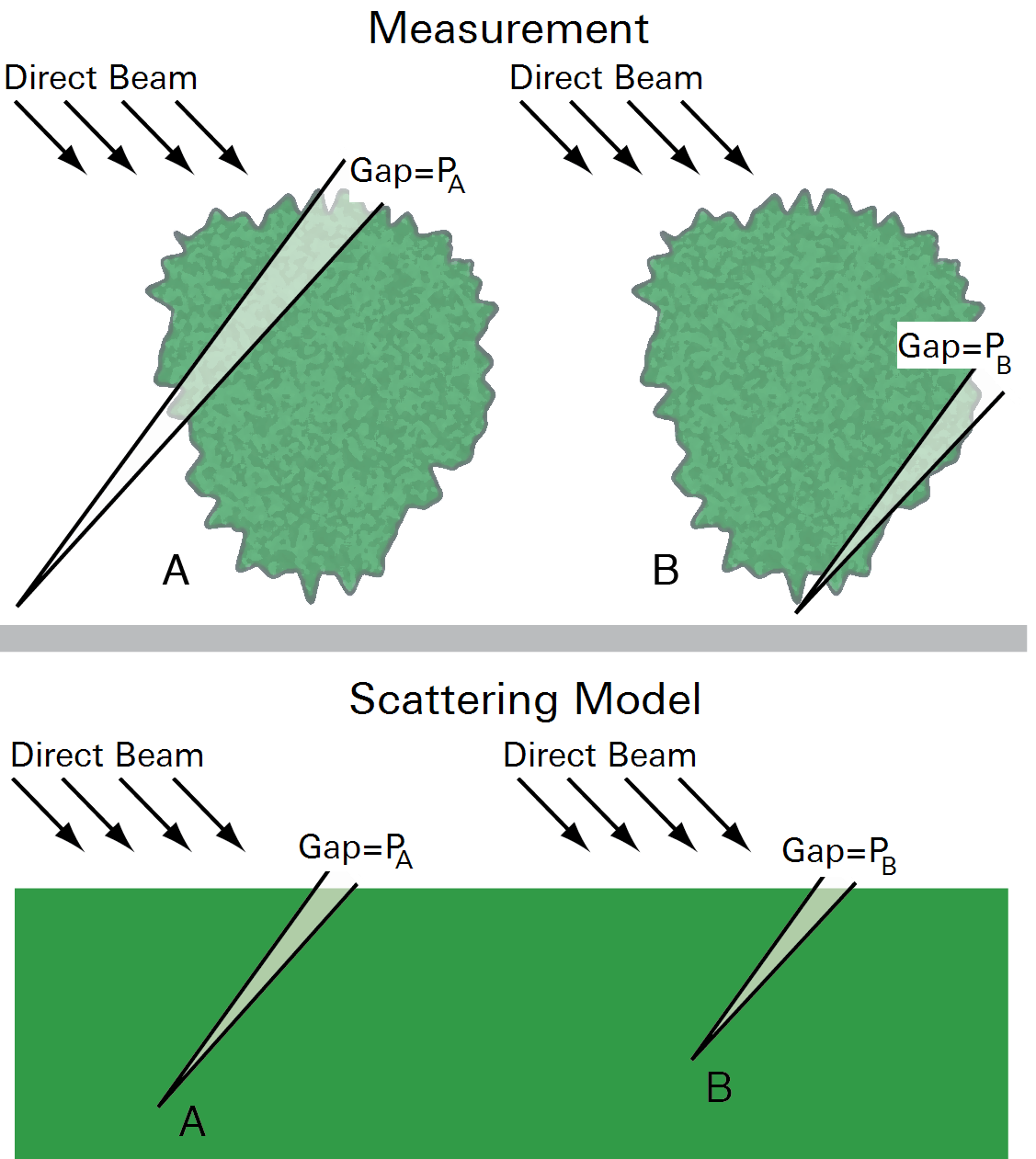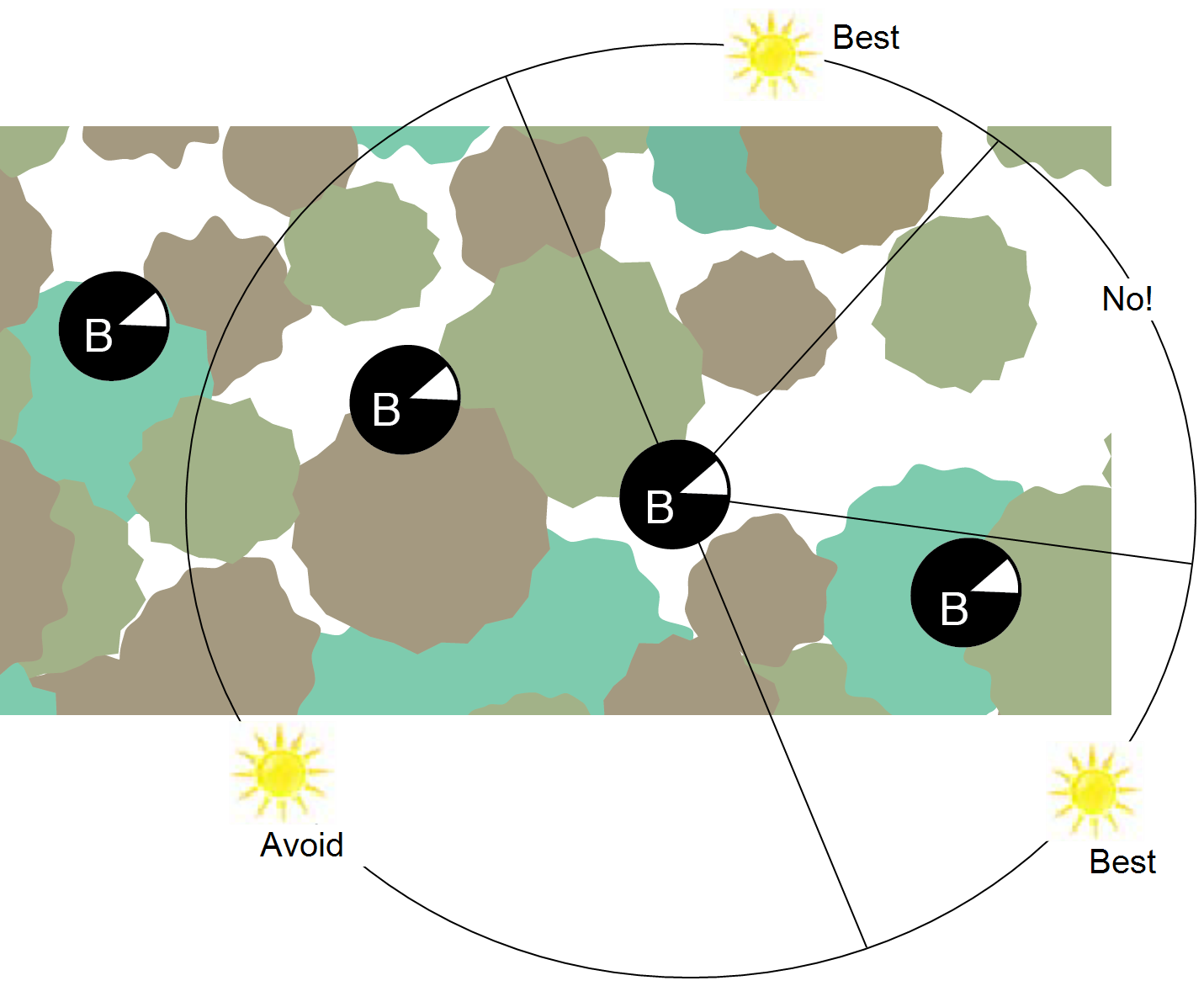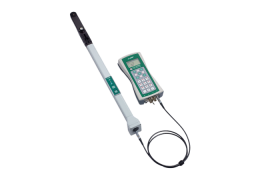The scattering correction is based on a simple model, and how well it works in any particular circumstance depends on how well those circumstances conform to the assumptions of the model. A very fundamental assumption of the model is that the canopy is one dimensional (vertical), with foliage that can be clumped. The sun is above the canopy looking down, and the LAI sensor is below the canopy looking up. The model canopy is a good approximation to a fairly uniform, full cover actual canopy. But how about other settings?
Here is a key factor in how well the model will predict scattering errors: The model will fail when the relation between gap fraction at any particular view angle and the sunlit leaf area that is visible in that view angle differs from what would be predicted in a horizontal canopy (Figure E‑2).

Another way to look at the problem presented by case A in Figure E‑2 is that unlike in the model (sun above, viewer below), the viewer and the sun are now effectively on the same side of the canopy. And the lower the sun is in the sky, the more the measurement will be dominated by sunlit leaf area, which the model cannot begin to predict, since it assumes the viewer is on the opposite side of the canopy.
Figure E‑3 illustrates the problem and offers a clue about how to reduce the problem. If we can choose a view direction that minimizes the differences between the view path lengths through the canopy (they determine gap fraction) and the direct beam path lengths through the canopy that determine sunlit leaf area, then we might minimize the model’s errors. If having the sensor look directly away from the sun, as in Figure E‑2, maximizes the problem, it suggests that viewing more toward the sun (the sun can’t be in the sensor’s view, of course) might reduce the problem.
This suggests the following measurement guideline for canopies with significant gaps: As much as possible, keep the sun in front of you, not behind you (Figure E‑3).

Testing the Model
Since no canopy fits the model, it is a good idea to test your measurement protocol (and scattering correction inputs) for each situation. A simple way to do this is to pick a representative transect or plot and measure it (at identical locations) when the sun is obscured, such as at twilight, and compare those results with the scatter-corrected results. Actually, you can scatter-correct both, but the data set with the sun obscured will have an FBeam value of 0. It’s best to do this sort of comparison under clear blue sky, as clouds introduce their own variability (see Sky Variability Tests).
